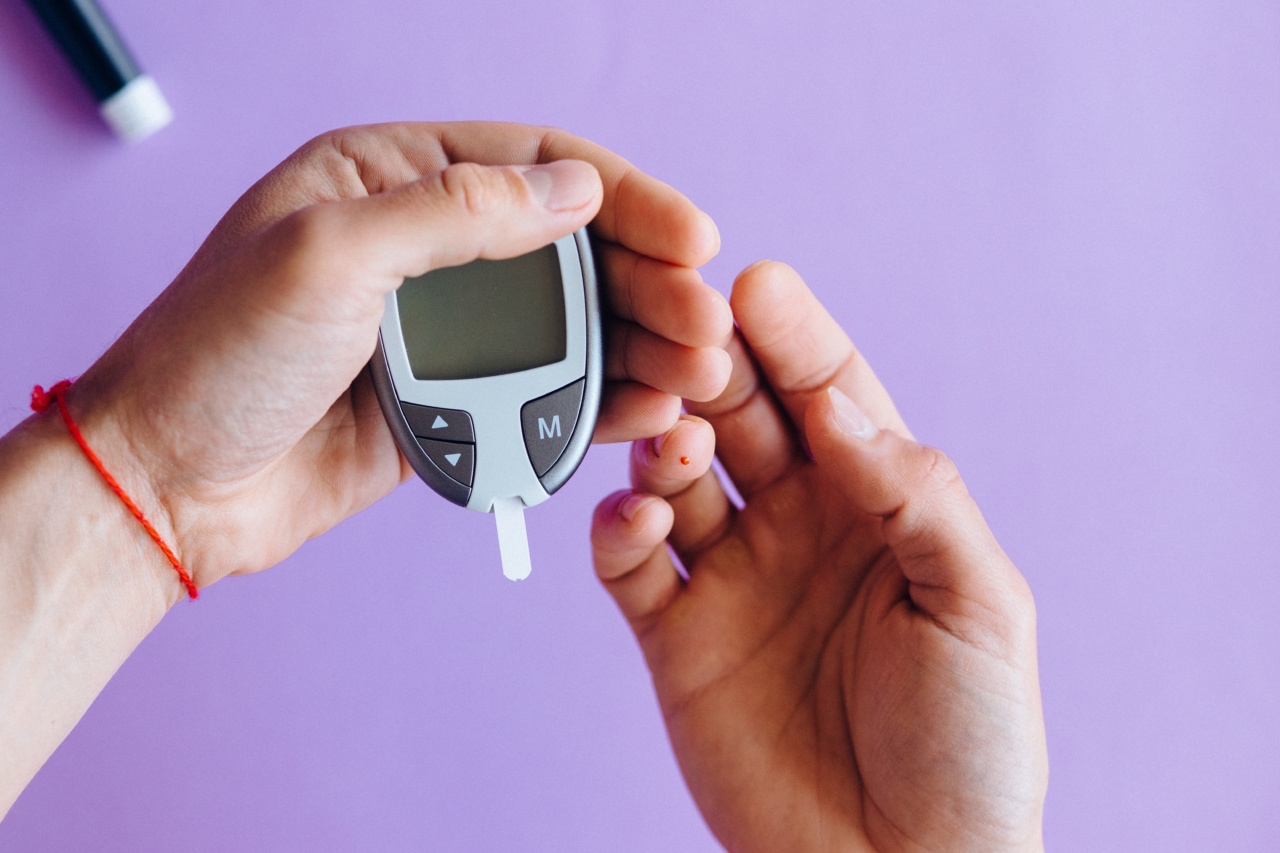Low blood sugar, also known as hypoglycemia, occurs when the level of glucose in your blood drops below normal. It is a common concern for individuals with diabetes, especially those who take insulin or certain medications.
In severe cases, low blood sugar can lead to dangerous complications, such as seizures or loss of consciousness. Therefore, it is crucial to know how to identify the signs of low blood sugar and take immediate action to treat it.
Signs and Symptoms of Low Blood Sugar
Recognizing the signs and symptoms of low blood sugar is essential for managing emergencies effectively. The following are common indications of hypoglycemia:.
- Feeling shaky or jittery
- Sweating excessively
- Confusion or difficulty concentrating
- Irritability or mood swings
- Dizziness or lightheadedness
- Extreme hunger
- Blurred vision
- Headaches
- Pale skin
- Feeling tired or weak
Causes of Low Blood Sugar
Several factors can trigger low blood sugar. Understanding these causes can help you prevent emergencies and take appropriate actions. Some common reasons for hypoglycemia include:.
- Skipping or delaying meals
- Consuming too little carbohydrates
- Excessive physical activity or exercise
- Alcohol consumption without food
- Misjudging insulin or medication doses
- Medical conditions affecting hormone production
Treating Low Blood Sugar Emergencies
When facing a low blood sugar emergency, swift action is vital. Here are steps to take to manage the situation:.
- Consume quick-acting carbohydrates: Administer glucose tablets, fruit juice, regular soda, or sugar cubes to raise blood sugar levels rapidly.
- Recheck blood sugar levels: After 15 minutes, check blood glucose levels again to ensure they have increased. If they are still extremely low, repeat step 1.
- Eat a snack: Once blood sugar levels have stabilized, eat a balanced snack containing protein and carbohydrates to help maintain glucose levels.
- Monitor for changes: Stay vigilant for any recurring symptoms that may indicate continued low blood sugar. Adjust your treatment plan accordingly.
Preventing Low Blood Sugar Emergencies
Prevention is key when it comes to avoiding low blood sugar emergencies. By incorporating these proactive measures into your routine, you can reduce the risk:.
- Regulate meal patterns: Stick to regular meal times and avoid skipping meals. Be mindful of carbohydrate intake and spread it evenly throughout the day.
- Monitor blood sugar levels: Check your blood glucose levels frequently, especially before and after meals, and adjust insulin or medications as needed.
- Exercise cautiously: If you engage in physical activity, monitor your blood sugar before, during, and after exercising. Have a snack nearby in case of a blood sugar drop.
- Limit alcohol consumption: Avoid consuming alcohol on an empty stomach, and always consume it in moderation.
When to Seek Medical Assistance
While low blood sugar emergencies can often be managed at home, there are instances when immediate medical attention is necessary. Seek medical assistance if:.
- The person is unconscious or having a seizure.
- The person cannot safely consume food or drinks.
- Low blood sugar symptoms do not improve or worsen after consuming a quick-acting carbohydrate.
- The person is unable to take appropriate action due to confusion or altered mental state.
Conclusion
Dealing with low blood sugar emergencies can be challenging, but with proper knowledge and preparedness, you can effectively manage these situations.
Recognizing the signs, taking immediate action, and preventing hypoglycemia are key to ensuring safety and well-being. By being proactive and seeking medical assistance when needed, you can effectively navigate low blood sugar emergencies and keep them under control.






























